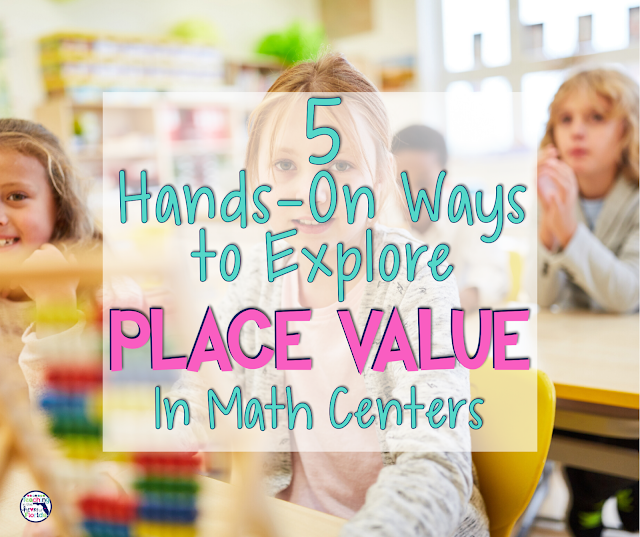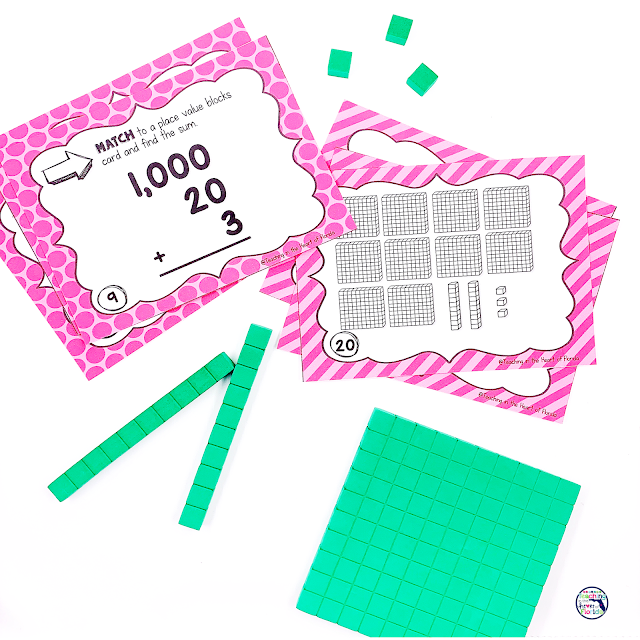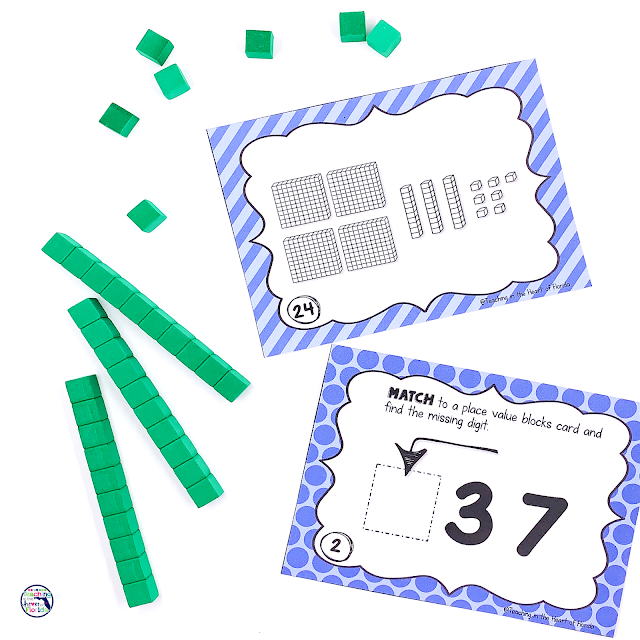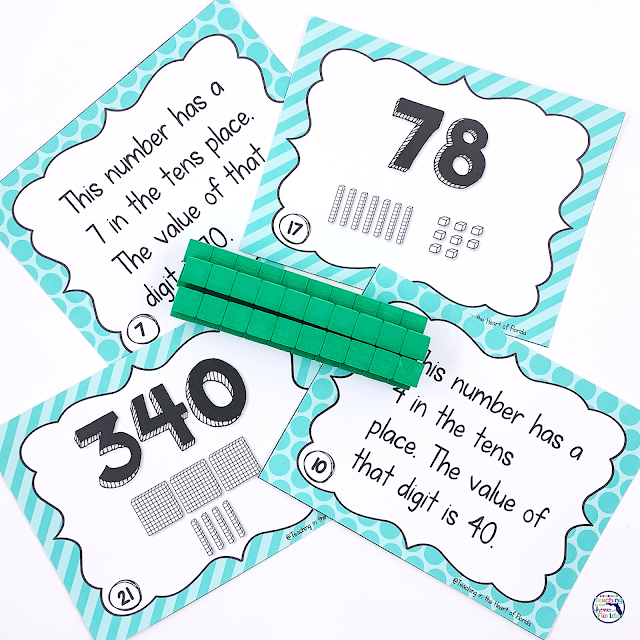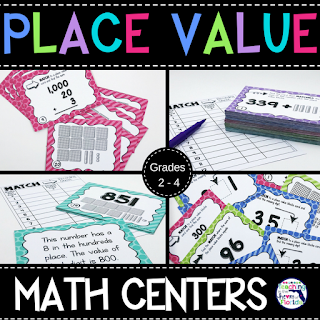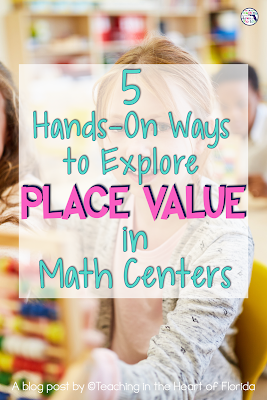5 Hands-On Ways to Explore Place Value in Math Centers
Now that your students have gained a better understanding of place value through the Place Value Game - we will give them 5 hands-on ways to explore place value in math centers!
I love to give students a variety of ways to approach math concepts. It helps me differentiate for my students, but also expands their conceptual understanding.
These 5 Place Value Centers give them the variety I want them to have and they can be used in so many traditional ways:
Small-Group
Formative Assessments
They can also be used as independent activities which might be necessary as we return to the classroom and incorporate social distancing for our students. Each student could be given a set to work on independently at their seat.
Here are the 5 different hands-on ways to explore place value with these math centers:
This is a great place to start. Students will use basic place value knowledge to match 2 & 3 digit numbers to the card containing the correct place value pieces.
Students already have background knowledge of expanded form from 2nd grade and this set of task cards builds on that knowledge. Students match the expanded form of a 2 or 3 digit number to the card with the corresponding place value pieces.
This set combines their knowledge of addition and the use of place value. I love that it further deepens the knowledge that base ten blocks are concrete representations of numbers.
If your students need an introduction to using base ten blocks for multi-digit addition - The Reason Why Using Hands-On Place Value Strategies is Still Important in 3rd Grade Addition can help!
This set starts to increase the difficulty by asking students to determine the missing digit. students must determine what place value the number is in and then identify the card that contains the correct combination of base ten blocks.
When students are working with these place value centers, I always have base ten blocks in the center. This is important because I want to make sure that those students who want to build the numbers are able to, and those who don't need them can make that decision.
Depending on your students, you could use all 5 centers at the same time, or gradually build from the basic set (#1) to the most difficult (#5).
They are perfect for differentiation - you could assign different sets to different students based on their needs.
Print, laminate, and they are ready to go! They will last for years and can be used in grades 2 - 4, so they are very versatile!
Grab your Place Value Centers here!
This set is one way to include 5 hands-on ways to explore place value in math centers. What are some hands-on ways students can explore place value in your classroom?
If you need to come back to this blog post later - pin this NOW!
I love to give students a variety of ways to approach math concepts. It helps me differentiate for my students, but also expands their conceptual understanding.
These 5 Place Value Centers give them the variety I want them to have and they can be used in so many traditional ways:
Partners
Small-Group
Formative Assessments
They can also be used as independent activities which might be necessary as we return to the classroom and incorporate social distancing for our students. Each student could be given a set to work on independently at their seat.
Here are the 5 different hands-on ways to explore place value with these math centers:
1. Matching 2 & 3 Digit Numbers + Place Value Pieces
This is a great place to start. Students will use basic place value knowledge to match 2 & 3 digit numbers to the card containing the correct place value pieces.

2. Expanded Form + Place Value Pieces
Students already have background knowledge of expanded form from 2nd grade and this set of task cards builds on that knowledge. Students match the expanded form of a 2 or 3 digit number to the card with the corresponding place value pieces.
3. Adding 2 & 3 Digit Numbers + Place Value Pieces Together
This set combines their knowledge of addition and the use of place value. I love that it further deepens the knowledge that base ten blocks are concrete representations of numbers.
If your students need an introduction to using base ten blocks for multi-digit addition - The Reason Why Using Hands-On Place Value Strategies is Still Important in 3rd Grade Addition can help!
4. Find the Missing Digit + Place Value Pieces
This set starts to increase the difficulty by asking students to determine the missing digit. students must determine what place value the number is in and then identify the card that contains the correct combination of base ten blocks.
5. Place Value Riddles
Kids love riddles and these cards won't disappoint! Students will read the riddle and determine what number it is describing. The matching card contains both the number and the base ten blocks that match. It's also a great way for students to correlate the number to the place value pieces.
When students are working with these place value centers, I always have base ten blocks in the center. This is important because I want to make sure that those students who want to build the numbers are able to, and those who don't need them can make that decision.
Depending on your students, you could use all 5 centers at the same time, or gradually build from the basic set (#1) to the most difficult (#5).
They are perfect for differentiation - you could assign different sets to different students based on their needs.
Print, laminate, and they are ready to go! They will last for years and can be used in grades 2 - 4, so they are very versatile!
Grab your Place Value Centers here!
This set is one way to include 5 hands-on ways to explore place value in math centers. What are some hands-on ways students can explore place value in your classroom?
If you need to come back to this blog post later - pin this NOW!

